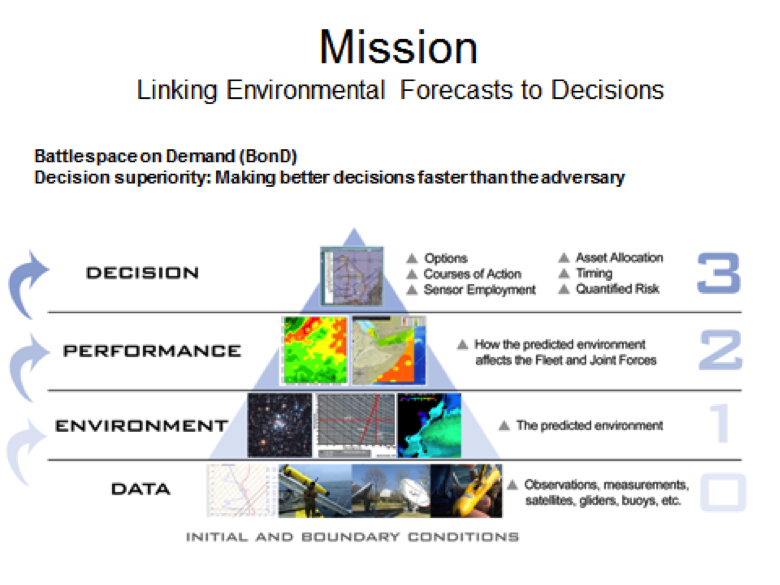By Thornton May, Futurist, Senior Advisor with GP, Executive Director & Dean - IT Leadership Academy
Every age, era and epoch has a feel to it.
Many journalists, analysts and academics attempt to capture this zeitgeist in an aphorism worthy of a bumper sticker. In the pre-bust dot.com era the mantra frequently heard at the top of the house was “Don’t be Amazoned, ” transforming the iconic company of that age into a verb. Fast forward to the age we just left where for many the chant was “Do more with less.” Judging from interviews and workshops I recently conducted with hundreds of executives, indicates that the mandate for our time might well be:
“Create value with data.”
A defining reality of the age we live in is increased digitization. Just about everything in the business world has become or is well on its way to becoming “machine readable.” This has the knock-on effect of making everything in business “searchable” and of increasingly greater impact subject to analysis. This changes how we must lead and the skills we must cultivate and celebrate in the modern enterprise.
A New Kind of Hero
Just as every age has its bumper sticker, so too does every age have its particular kind of hero.
The Scientific Managers – Frederick Winslow Taylor (1911)
The Entrepreneurs – Joseph Schumpeter (1942)
The Organisation Man – William Whyte (1956)
The Knowledge Workers – Peter Drucker (1966)
The Knowledge Class – Daniel Bell (1973)
The Prosumers – Alvin & Heidi Toffler (1980)
The Symbolic Analysts – Robert Reich (1991)
The Elancers – Helen Wilkinson (1999)
The Creative Class – Richard Florida (2002)
I hypothesize that the hero of the age we are just entering will be the person able to create value with data. The “with-data” aggressive and confident problem-solver will be to the Peta & Yottabye Age what the astronaut was to the Space Age.
The Many Categories of Creating Value with Data
There appears to be an almost infinite variety of ways data can be used to create value. Two broad categories of with-data value creation are:
A) creating a system [a market, company or organization] specifically designed to create value with data;
B) “data-ize” [a new and awkward term] an existing function within an existing entity.
Let’s focus on the first definition.
Systemic, With-Data Value Creators
Any list of executives who systemically create value with data probably has to include Jeff Bezos at Amazon. A group of fellow futurists I pal around with once had the opportunity to see what was represented to us as an original copy of the original business plan for Amazon. That plan said the company intended to:
“…sell a low-touch commodity product [like books] via a process that allows us to extract information that will form the base of follow-on high value services….”
This was an enterprise conceptualized from the get-go with the intention of creating value with data. Not data as an after-thought [the “data exhaust” so many pundits refer to] but the reason to be.
Ed Gough is the Chief Scientist at the NATO Undersea Research Centre in La Spezia, Italy. I met Ed when he was the Technical Director and Deputy Commander at the US Navy’s Meteorology and Oceanography Command [CNMOC]. One of the many tasks at CNMOC is to “Operationalize Ocean Science.”
In recent years every part of the U.S. military establishment has been under rigorous financial scrutiny. In some circles people were questioning the value of Navy-generated weather forecasts. Pointed questions were being asked regarding what is the value of this? And how do you justify spending the nation’s money doing the things you are doing? The portfolio of capabilities at CNMOC was being evaluated and being questioned severely. It came down to the question – does this information make a difference? Was weather information a commodity?

Gough and his team set about explaining how meteorology and oceanography supported the broad goal of decision superiority. The “Battlespace on Demand” visual above encapsulates CNMOC’s strategy for creating value with data. Gough demonstrated how the unique portfolio of capabilities delivered by CNMOC migrated raw data [Tier Zero] from descriptive use [what was happening]; to predictive use [Tier One -what might happen]; to operational use [Performance layer Tier Two]; to prescriptive use [Tier Three -what is the optimal result we can make happen].
Historically what happened at the Tier Three layer was CNMOC would present Tier Two performance data to a smart person, and he/she would intuit what it means in terms of the situation. CNMOC is now applying emerging decision science and insights into decision making to create automated Tier Three decision-augmentation products.
I think Ed popped out of the womb creating value with data. In January of 1971 Ed’s first project at the Woods Hole Oceanographic Institute was designing the deep sea moorings to test the hypothesis that there was more going on in ocean dynamics than was thought at the time. This tiny first step led to a sensor-enabled, systemic collection of ocean data culminating in NASA being able to produce a re-analysis of data collected over several years to show the surface currents/circulation of the world ocean.
Were it not for the efforts of Ed and the oceanographic community the well-publicized and widely used “Google Earth” application would more appropriately be termed “Google Dirt.”
Bezos and Gough – only one a household name – each a systemic, with-data value creator.
42 Berkeley Square
London W1J 5AW, UK
Phone: 44(0)20.7318.0860
Fax: 44(0)20.7318.0862
info@gustinpartners.com